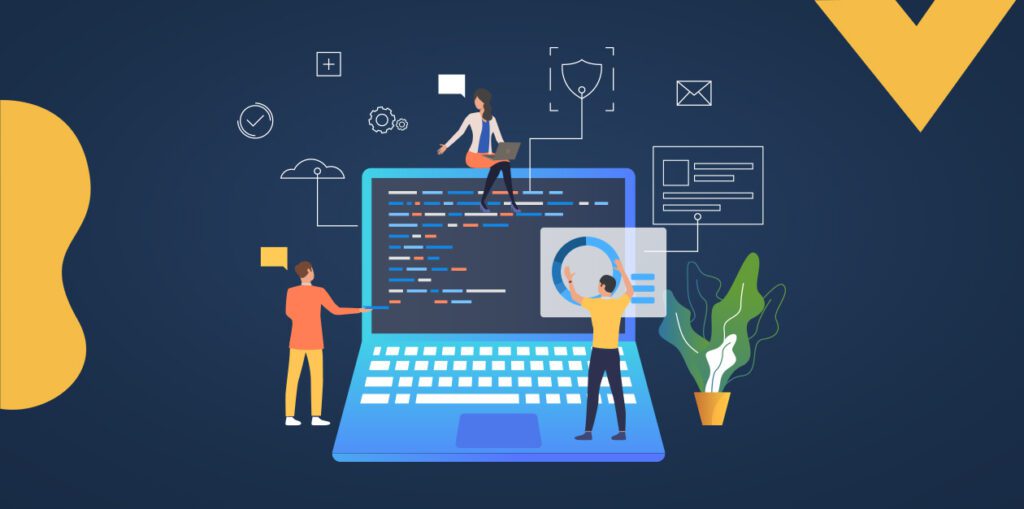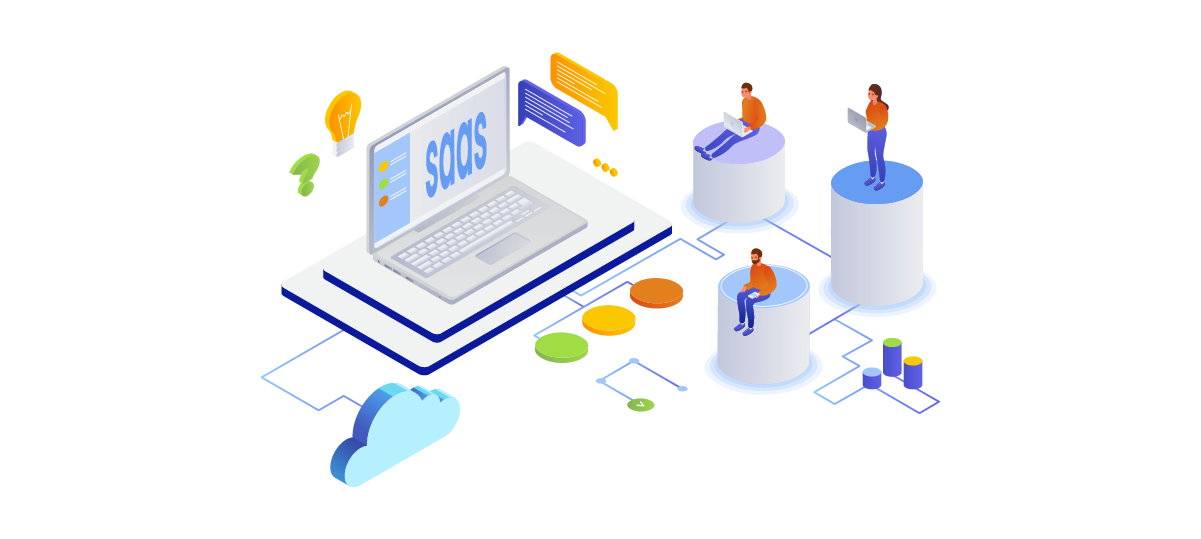Software as a Service, or SaaS as it is more popularly known, is definitely one of the fastest-growing software sales models worldwide; however, it does possess its fair share of challenges and risks. One area that often possesses a challenge is accounting. Most SaaS firms are subscription-based, requiring a robust accounting system that can cater to the needs of a SaaS business. SaaS suppliers may have to deal with various complexities, such as sales taxes, accounting regulations, contract renewals, etc.
Many SaaS startups often focus on developing and establishing their product/service without realizing that as their business scales up, they need to strengthen their accounting area as well. Apart from staying on top of their accounting particulars, they also need to ensure that they are compliant with the prevalent tax laws and rules established by regulatory bodies like Financial Accounting Standards Board (FASB) and International Financial Reporting Standards (IFRS).
Table of Contents
SaaS Accounting

Before we discuss some of the common SaaS accounting challenges and how to mitigate them, let’s take a look at what SaaS accounting means. The massive growth of SaaS business models has resulted in massive SaaS accounting changes as well. This in turn has resulted in the creation of a standardized set of SaaS accounting rules which are applicable globally. These rules will apply to organizations that fulfill the below three criteria:
- The company has complete ownership of the software, and its customers do not have the right to own the software unless they have licensed or purchased the software.
- The customers should not run the software on their own or use third-party hardware.
- The SaaS services are provided by the company’s employees, and the performance obligations cannot be delivered by the customers or any third-party vendor.
Since the majority of the SaaS providers fulfill these criteria, it is easier to ensure that the standardized SaaS accounting rules are being applied globally.
SaaS Accounting Challenges
Even though there are clear, well-defined accounting rules in place, SaaS companies continue to face various accounting challenges. There are several issues that can arise due to these accounting challenges, such as non-compliance with state, federal, and international taxes, rules, and regulations, financial reporting issues, difficulty in calculating customer lifetime value (CLV) figures, etc. Read on to find out about the three key accounting challenges.
1. Revenue recognition
One of the most challenging and common accounting challenges faced by SaaS companies is recognizing revenue at the right time. Since the customer never actually ‘gets control’ of the software, it is difficult to apply the general rules of revenue recognition. As per the FASB rules, in the majority of the cases, SaaS companies are required to recognize most of their revenue over the contract term. This rule stands in place irrespective of whether the customers pay the SaaS providers in full upfront for the services or pay as per the subscription plans of weekly, monthly, quarterly, or annual.
2. Managing expenses
Another key accounting challenge is knowing how to manage your expenses and budget. It is very important for SaaS firms, such as sales, to be well aware of their expenses and identify them at specific times. Ideally, SaaS providers should spread out the majority of their expenses throughout the duration of their customer contract or the expected lifespan of the customer relationship. It is vital for SaaS providers to know which of the expenses should be recognized immediately and which of them can be repaid gradually.
3. Sales tax collection
The next crucial accounting challenge faced by SaaS providers is the management of sales tax. This is important as SaaS providers often employ workers remotely and have operations and sales in different states. They need to ensure that they comply with the various state tax laws, especially in states where they have their SaaS centers. Although it is not mandatory for SaaS companies to collect sales taxes on their services, some states have sales tax collection in place for some of the service categories.
Mitigating the Accounting Challenges
The majority of the SaaS providers follow the accrual accounting method, which means that revenue is recorded whenever a sale happens and not on a cash basis which records revenue when the actual amount is received. According to ASC 606 and IFRS15, SaaS businesses should recognize revenue for contracted services when the service control is ‘transferred’ to the customer. Since SaaS customers never truly obtain ‘control’ over the services, the SaaS providers should recognize revenue over the contract’s lifetime.
When it comes to sales tax, it is absolutely vital for SaaS providers to have in-depth accounting knowledge to avoid any financial risks and fines. Different states and jurisdictions within those states have different sales taxes laws in place, which due to the nature of SaaS services, can be quite complex to understand and implement. The best way to stay on top of these rules and regulations and avoid costly mistakes is to use robust accounting software that will enable the SaaS companies to streamline their financial management and ensure compliance with all the state, federal, and international accounting regulations.
Conclusion
As your SaaS business scales up, it is only natural that more and more accounting challenges crop up. The best option to mitigate and overcome these accounting challenges is to have a strong, professional, and knowledgeable finance and accounting management team in place, along with the right accounting software that can keep you abreast of all the accounting rules and regulations.
You can check out some of the top accounting software on SaaSworthy.

How to Ensure Customers Realize Value from your SaaS Platform
The focus of the sales and marketing teams and the source of top-line revenue growth may be new customer logos. But in recent years, renewals have become a significant growth engine for SaaS businesses.
How do you keep SaaS Customers Engaged?

It is easier to get consumers started using your SaaS platform than it is to make sure they get value out of it. Customers’ success would aid SaaS companies in generating new sources of income and improving their bottom line. According to a recent McKinsey study, even at startups, new revenue growth could be driven by between a third and a half of existing customers. Customer acquisition expenses are reportedly five times higher than customer retention expenses.
It takes work to convert clients into raving fans who will upgrade to new services and renew their contracts on your platform. To ensure that they are not only satisfied but also turn out to be successful, a concerted effort is required. They can then use your platform to address more issues, eventually turning into your brand’s champions.
Nowadays, many businesses strive for a Net Retention Rate (NRR) of 100 percent in order to safeguard and improve their bottom line earnings. Existing consumers are more inclined to make more purchases from you and test out new products that are potential new clients. These factors have made customer success more prominent in the contemporary SaaS economy.
Here are Some Crucial Measures to Help your Clients succeed:
Developing momentum
The simple part is getting users started on your platform. The difficult aspect is making sure they derive value from your platform. Similar to other business endeavors, understanding whether customers see the value and successfully use your product depends on having the correct data and the analytical skills to interpret it. You must first comprehend how your clients utilize your product, as well as the features and functionalities that they employ most frequently and the commercial operations that they use it for. Understanding your clients’ emotions depends on this data.
Do your consumers ever have problems utilizing your product in the manner they intended? Such issues frequently occur in the early phases of customer adoption. However, it is generally simpler to avoid them in the future. In the end, what matters is how you bounce back and learn. Additionally, having information on how
customers using your platform enables you to identify this and continuously assess how customer success is being achieved on it. It’s crucial to give your customers a high-touch experience, especially in the beginning. It’s also essential to designate a committed customer success manager who takes an organized, smooth, and unique approach to every client.
Being Reliable
Gaining your customers’ trust, walking them through the implementation process, providing them with high-touch personalized service, watching how they use your platform, comprehending the difficulties they encounter, and assisting them in realizing their progress will help you keep them, increase their platform usage, and turn them into your brand ambassadors.
Early Engagement
Beginning at transaction completion or sooner, consumers’ success is ensured. The customer signs the contract when the deal is closed by your sales team, after which the customer success team takes over. The next phase is to develop an implementation roadmap while earning the customer’s trust. Onboarding and training, user acceptability testing (UAT), project planning, and a solution description showing a successful customer implementation can all be included.
Constant Communication
It’s crucial to do quarterly business reviews. You need to know if your software satisfies your clients’ needs and assist them in creating a personalized product roadmap for future adoption. Customers should be aware of future upgrades in your product roadmap so they can predict when they will get a feature that will change the way they use your product.
Data on customer usage does not fully describe their success. The following questions can help you better understand how your platform functions for your customers:
- How much time do you save using our platform versus the one you were using before?
- Can you employ fewer employees than before?
- After using ours, have you ceased using any other software tools?
- Are you able to identify problems and their underlying causes more quickly than before?
You must realize, too, that clients won’t always have information on how their old systems operated. The aforementioned information may therefore be anecdotal in some cases. Nevertheless, by posing these questions, you may be able to make your clients more aware of the benefits of your platform and the objectives they hope to achieve through its use.
From the standpoint of the customer, switching SaaS products is a rather simple process. Customers that don’t utilize a SaaS platform’s features take their issues elsewhere. The most crucial ways to show that you care and are invested in their success are to listen to your clients’ needs and problems.
Conclusion
By taking these actions, you can demonstrate to your clients that your firm is a dependable partner that is sensitive to their needs and helps them discover answers to their business difficulties. Your customer success department will become a profit center as a result of your customers’ success in helping you develop new revenue streams and increase your bottom line. To get to know more about it, connect with SaaSworthy.





